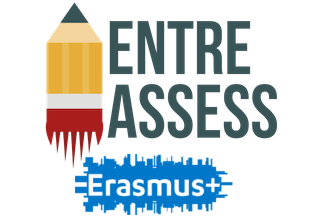 What it is: Problem-solving is performed as part of coursework and used to assess technical/vocational skills but assessed using separate criteria. Problem-solving is not specifically “taught” as such and the assessment instruments are viewed as “developmental tools” (assessment for learning). Key competence assessments are voluntary and the teacher plays a validator role.
What it is: Problem-solving is performed as part of coursework and used to assess technical/vocational skills but assessed using separate criteria. Problem-solving is not specifically “taught” as such and the assessment instruments are viewed as “developmental tools” (assessment for learning). Key competence assessments are voluntary and the teacher plays a validator role.
How it works:
- Students select a task from a list of “recommended” assessment activities.
- Using a Problem-Solving Assessment sheet (indicators and levels of performance), students self-assess their performance and identify evidence for each item ticked.
- The teacher assesses the evidence using the same Problem-solving Assessment sheet.
- The student and the teacher compare and discuss the final assessment results.
- The teacher enters successful key competency results for “Problem-solving” and a brief explanation in the mastery tracking online system.
Formal recognition for a problem-solving performance level (1, 2 or 3) is achieved only when demonstrated in two different assessments.
Benefits: This tool is seen as practical and workable as the assessment is integrated with existing authentic tasks. Students show an enhanced understanding of what it means to be an effective problem-solver and talk more confidently about their ability, an important aspect in convincing potential employers of their capabilities. In addition, the problem-solving construct has been thoughtfully designed and informed by evidence.
Challenges: The framework has been developed within the VET sector. Adoption at other levels of the education system would support measurement of change over time. Younger students (secondary education) would require an approach involving more active teaching. The voluntary nature of assessments and the inclusion of information from sources other than school-based activities are also two important challenges. Inter-tutor reliability has not been evaluated either.
Relevance for entrepreneurial teaching: The approach of requiring key competencies assessments on a selection of existing tasks may overcome the perceived assessment load barrier and problems associated with the assessment of EE competence in non-entrepreneurial subjects. Greater coherence is also expected if the approach is adopted at school level, not just by a single teacher. However, the question remains: Is problem-solving a good proxy for EE competence in non-business subjects?
Applied assessment methods: Performance assessment, self-assessment, formative assessment, feedback assessment.
Examples from practice: Validated self-assessment of problem-solving has been implemented as part of the Electronics and Information Technology Program at Torrens Valley TAFE (Australia). A comprehensive validation study of the problem-solving assessment was completed by Curtis and Denton (2003).
Curtis, D & Denton, R. (2003). The authentic performance-based assessment of problem-solving. Adelaide: Australian National Training Authority. Retrieved from https://www.ncver.edu.au/publications/publications/all-publications/the-authentic-performance-based-assessment-of-problem-solving


